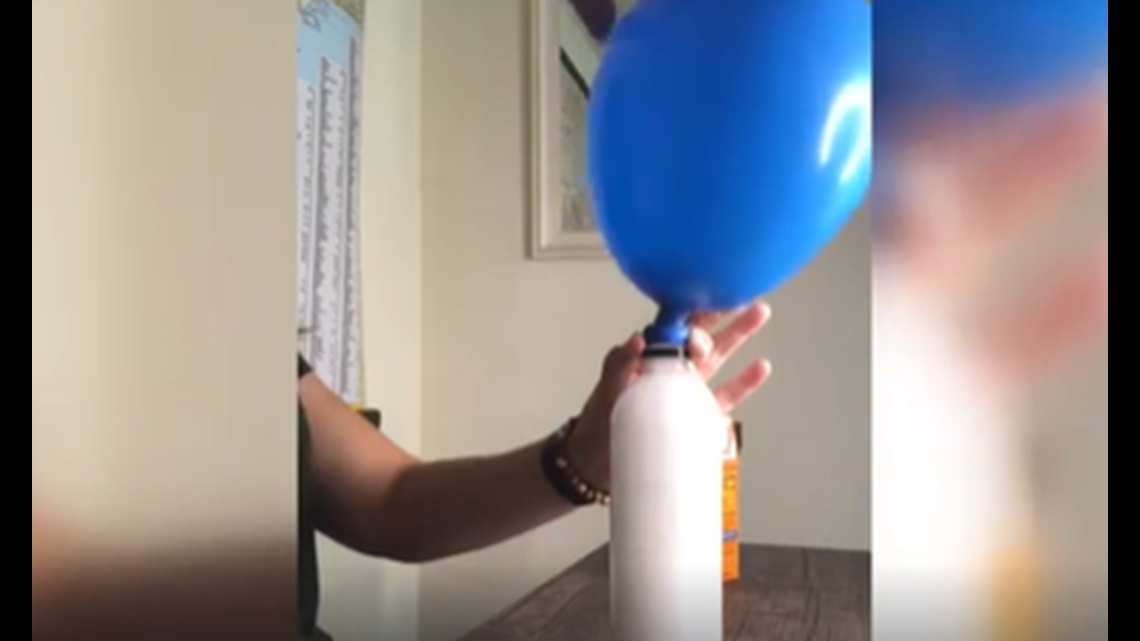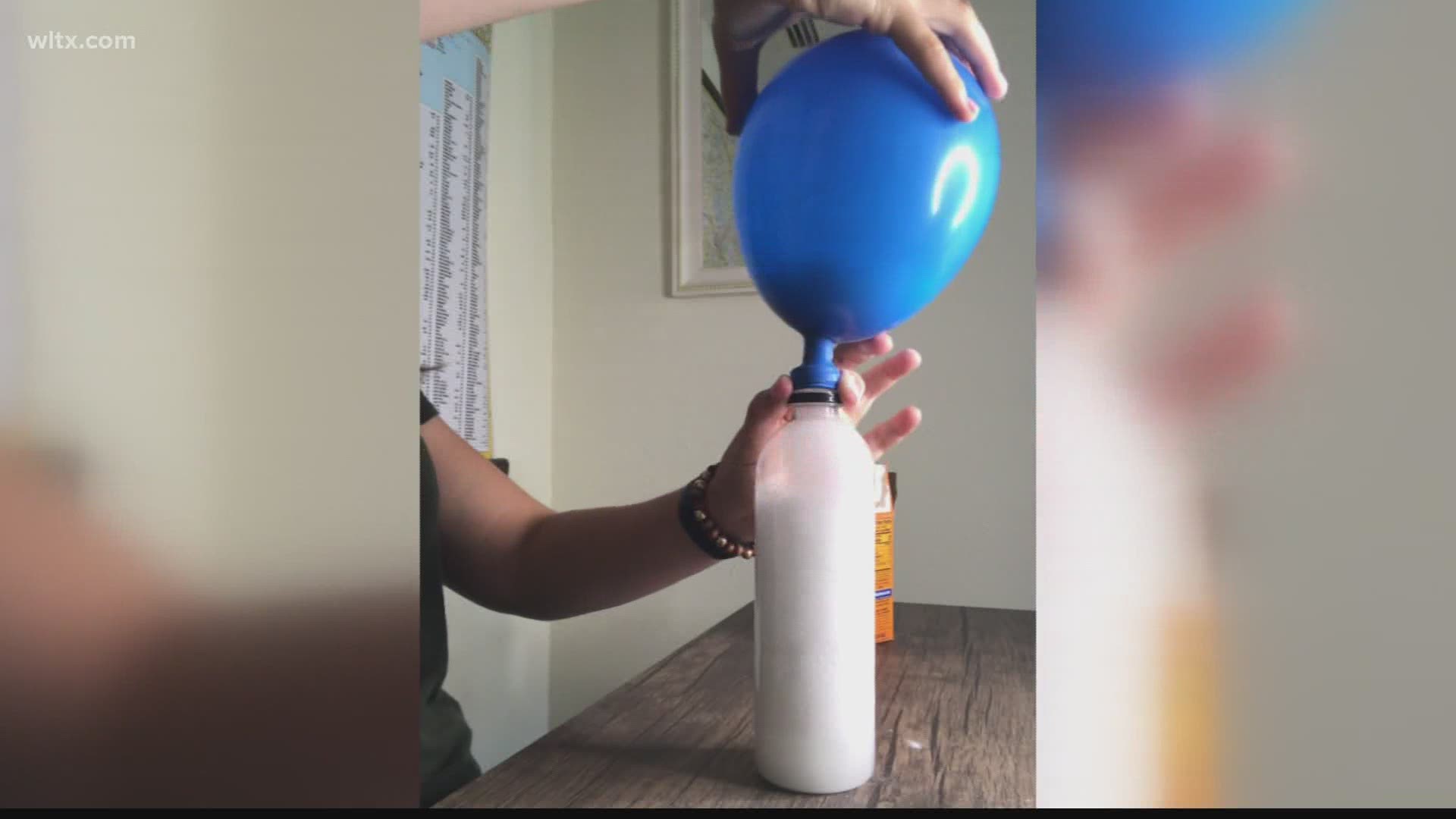COLUMBIA, S.C. — Our atmosphere is composed of a multitude of gases. There are two main ones that take up most of our air. Nitrogen is the biggest and takes up about 78 percent of the atmosphere. Oxygen is second and takes up about 21 percent of our air.
The remaining one percent of our air is filled with many trace gases, including methane, water vapor, carbon dioxide, and many more.
This experiment uses a chemical reaction to create carbon dioxide and you will be able to blow up a balloon with the gas in the process of the reaction.
Here is what you will need:
- 1 cup vinegar
- 1/3 cup baking soda
- Empty plastic water/soda bottle
- Balloon
You will want to fill your empty plastic bottle with about 1 cup of vinegar.
Next, carefully add about 1/3 cup of baking soda into your balloon. You can use a teaspoon measuring cup or a funnel to help get the baking soda into the balloon.
The next step is to carefully attach the end of the balloon to your bottle. Make sure not to get any baking soda into the bottle until the balloon is properly fastened!
Once the balloon is secure, lift the balloon upright so the baking soda falls into the vinegar.
An acid-base reaction occurs between the baking soda and vinegar, creating carbon dioxide gas. This gas will inflate your balloon!


The more baking soda and vinegar you use, the bigger the balloon will be.
RELATED: Easy at home science experiments!

